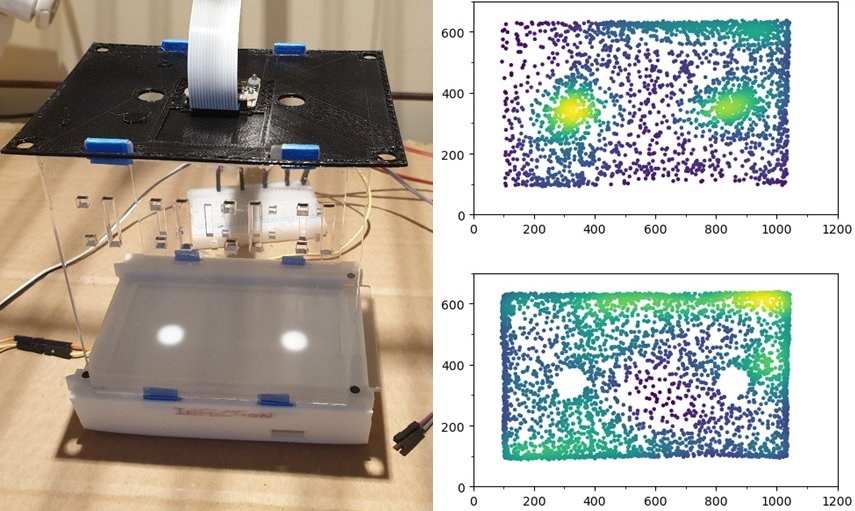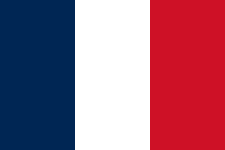You are here : LGBCenglishPlatform
- Partager cette page :
- PDF version
Platform
DISSECT facility
The LGBC hosts a facility designed to study the behavior of Drosophila flies, named DISSECT (Développement de Systèmes open Source pour l’Etude du ComporTement). This platform, created by a UVSQ research engineer (Vincent Rincheval), uses infrared-sensitive cameras coupled with small computers, to follow the movements of flies under different experimental conditions.
The systems used, which allow the simultaneous analysis of 1 to 256 flies, are built on the platform using 3D printers and electronic components (Raspberry Pi, Arduino, LED, etc.). These systems are mostly Ethoscopes, which were invented in Giorgio Gilestro’ laboratory at Imperial College London (https://lab.gilest.ro) to study locomotion, circadian cycle and fly sleep stages.
Thanks to the Open Source nature of these machines, DISSECT develops and uses new systems allowing more varied studies of behavior such as development time, longevity, or interaction with external elements (light, food, vibrations , …). We routinely use 3D design and printing, Image Learning, and Python and C++ programming to improve these systems.
The DISSECT platform contributes to LGBC research themes (mitochondrial dynamics, immunity, etc.) but is also involved in collaborations with external organizations (Pasteur Institute, INRAE) on various themes, such as neurogenesis or the effects of chemicals on behavior. It also participates in practical lessons (olfaction), thanks to a mobile laboratory made up of ethoscopes and portable mini-incubators.
We currently have more than twenty systems allowing the analysis of several hundred flies or other small organisms simultaneously.

The systems used, which allow the simultaneous analysis of 1 to 256 flies, are built on the platform using 3D printers and electronic components (Raspberry Pi, Arduino, LED, etc.). These systems are mostly Ethoscopes, which were invented in Giorgio Gilestro’ laboratory at Imperial College London (https://lab.gilest.ro) to study locomotion, circadian cycle and fly sleep stages.
Thanks to the Open Source nature of these machines, DISSECT develops and uses new systems allowing more varied studies of behavior such as development time, longevity, or interaction with external elements (light, food, vibrations , …). We routinely use 3D design and printing, Image Learning, and Python and C++ programming to improve these systems.
The DISSECT platform contributes to LGBC research themes (mitochondrial dynamics, immunity, etc.) but is also involved in collaborations with external organizations (Pasteur Institute, INRAE) on various themes, such as neurogenesis or the effects of chemicals on behavior. It also participates in practical lessons (olfaction), thanks to a mobile laboratory made up of ethoscopes and portable mini-incubators.
We currently have more than twenty systems allowing the analysis of several hundred flies or other small organisms simultaneously.
Illustration
An ethoscope modified on the DISSECT platform (left photo) allows characterizing the differences in the interaction of a Drosophila fly with light, according to the circadian cycle. The fly is attracted to light in the morning (top right graph), while it avoids it during the afternoon (bottom right graph). Each point on the graphs represents a position occupied by the fly.
Additional information
Contact :
Vincent Rincheval
Plateforme DISSECT
Laboratoire de Génétique et Biologie Cellulaire
2, avenue de la source de la Bièvre
78180 Montigny-le-Bretonneux
Tel : 01.70.42.93.57
e-mail : vincent.rincheval@uvsq.fr
Vincent Rincheval
Plateforme DISSECT
Laboratoire de Génétique et Biologie Cellulaire
2, avenue de la source de la Bièvre
78180 Montigny-le-Bretonneux
Tel : 01.70.42.93.57
e-mail : vincent.rincheval@uvsq.fr


 Plateforme
Plateforme